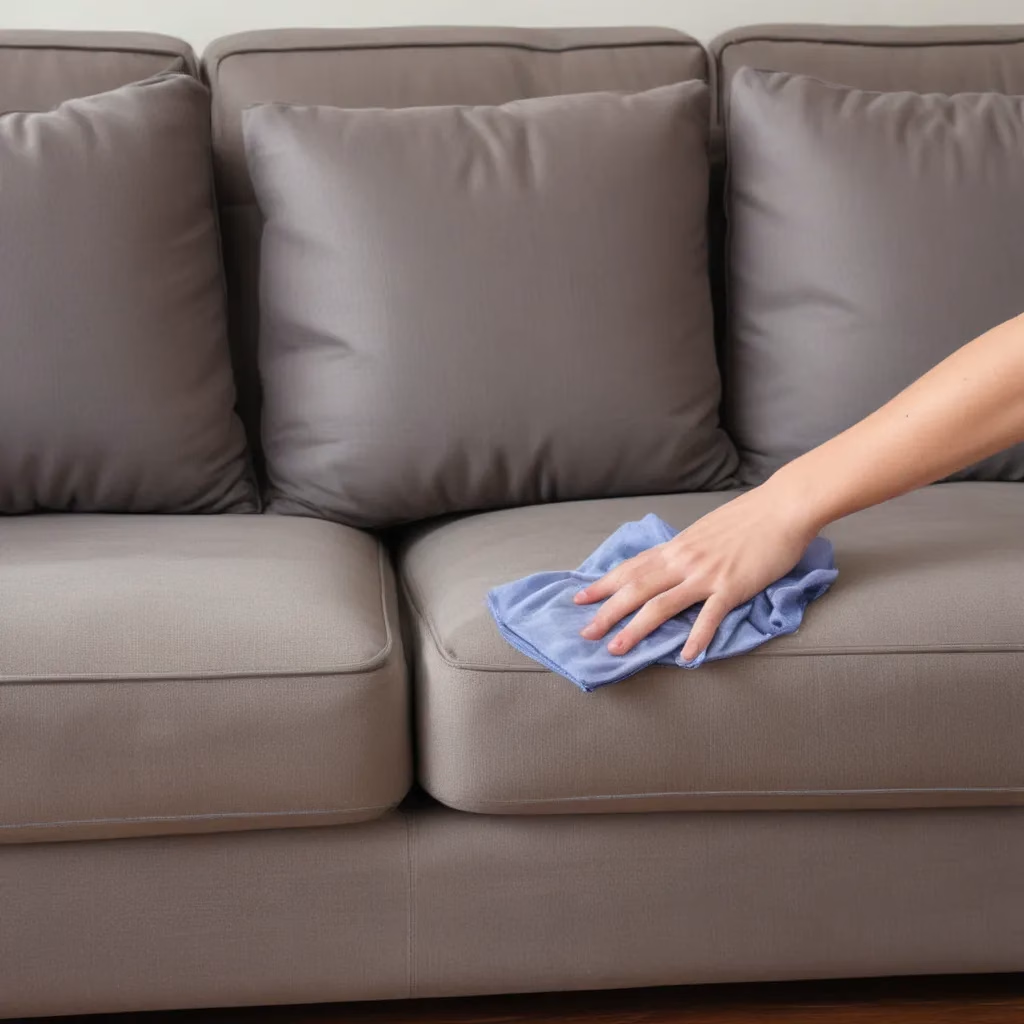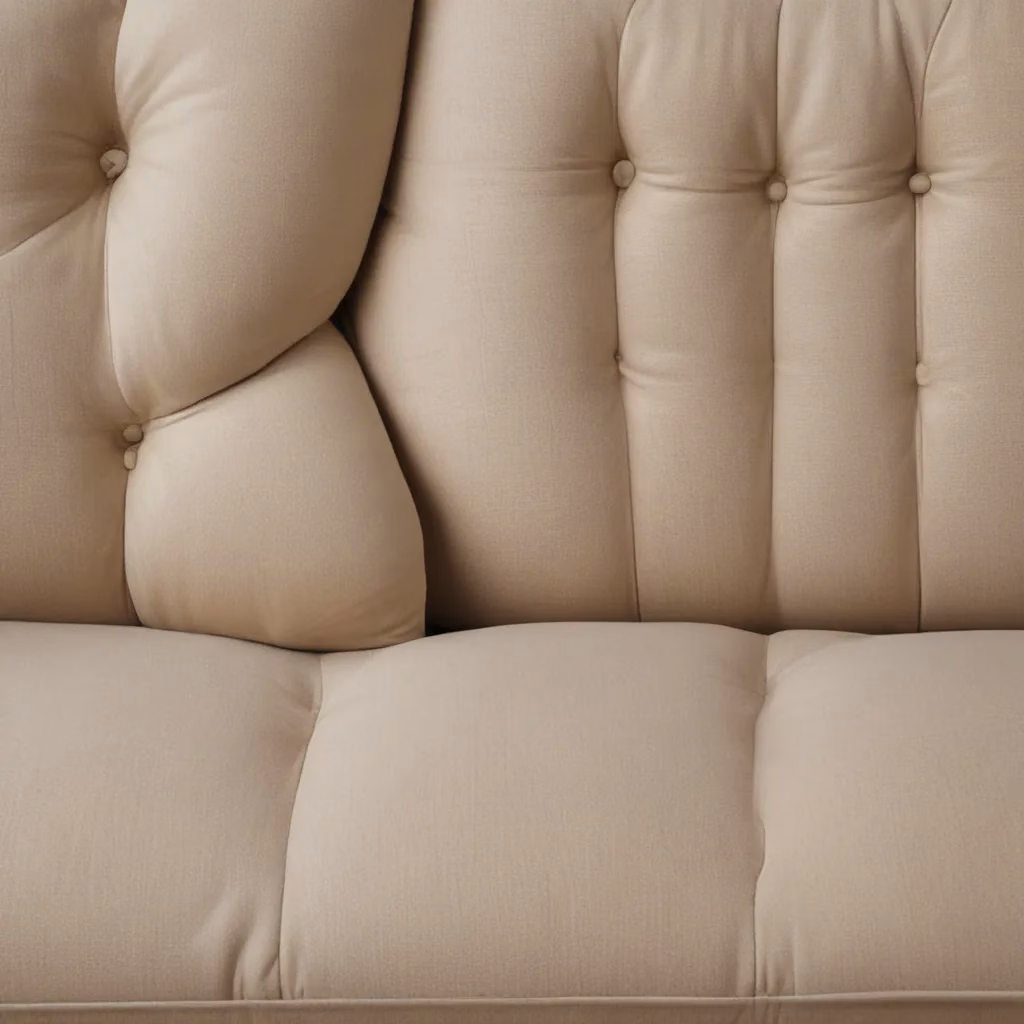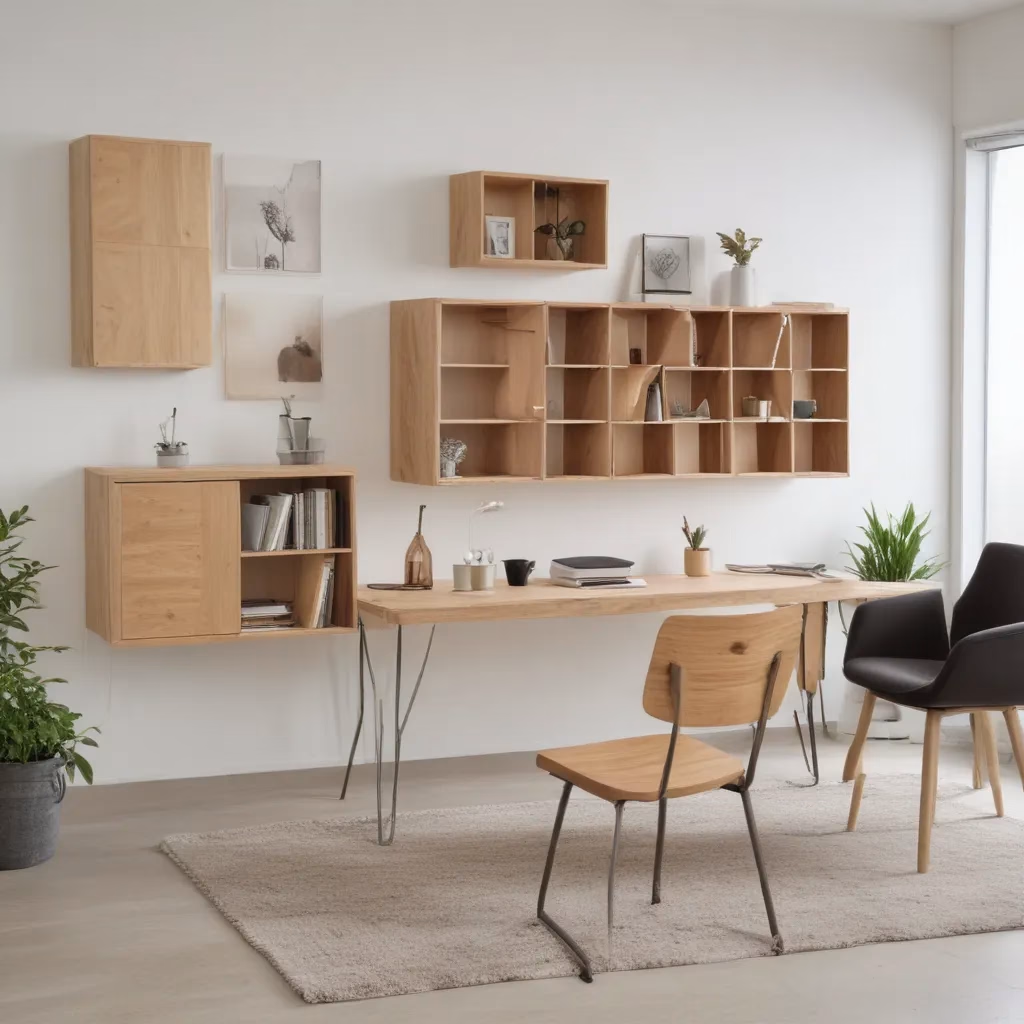
As an experienced furniture consultant and interior design writer for SofaSpectacular.co.uk, I’ve seen firsthand the transformative power of a well-maintained sofa. Whether you’ve invested in a luxurious microfiber sectional or a classic tufted sofa, proper cleaning and upkeep are essential to preserving its beauty, comfort, and longevity.
Microfiber sofas, in particular, have become a popular choice for modern living spaces thanks to their exceptional durability, stain resistance, and easy maintenance. However, even the most resilient fabrics require a thoughtful approach to keep them looking their best. In this comprehensive guide, we’ll explore the art of mastering microfiber sofa cleaning and upkeep, ensuring your investment remains a source of comfort and style for years to come.
Fabric and Upholstery Selection
Microfiber Characteristics and Benefits
Microfiber is a synthetic fabric composed of ultra-fine polyester or nylon fibers, typically measuring less than one-tenth the diameter of a human hair. This intricate weave not only provides a velvety soft touch but also delivers impressive performance characteristics that make it an excellent choice for upholstery.
One of the primary advantages of microfiber is its exceptional stain resistance. The tightly woven fibers create a surface that repels liquids and prevents spills from penetrating deep into the fabric. This makes microfiber an ideal option for households with pets, children, or a lively social life, as it can withstand the occasional mishap with ease.
In addition to its stain-resistant properties, microfiber is also renowned for its durability. The synthetic fibers are highly resistant to fading, pilling, and general wear and tear, ensuring your sofa maintains its fresh appearance for an extended period. This makes microfiber a practical and long-lasting choice, especially for high-traffic living areas.
Upholstery Fabric Qualities
When selecting upholstery fabric for your sofa, it’s essential to consider more than just the aesthetic appeal. The quality of the fabric can significantly impact its performance, longevity, and overall maintenance requirements.
Factors to consider include:
-
Fiber Content: Natural fibers like cotton, linen, and wool offer a classic, timeless look but may require more specialized care. Synthetic fabrics like polyester and microfiber often provide greater durability and ease of maintenance.
-
Weave and Texture: Tight, dense weaves like microfiber or velvet tend to be more resistant to stains and wear, while looser, more open weaves may be more susceptible to snagging and damage.
-
Cleaning Code: Always check the manufacturer’s cleaning code, which indicates the recommended cleaning method (e.g., “W” for water-based cleaning, “S” for solvent-based cleaning, “WS” for a combination).
By understanding the unique characteristics of different upholstery fabrics, you can make an informed decision that aligns with your lifestyle, cleaning preferences, and the long-term care of your sofa.
Fabric Durability and Stain Resistance
Durability and stain resistance are two crucial factors to consider when selecting upholstery fabric for your sofa. These attributes can significantly impact the longevity and maintenance requirements of your investment.
Microfiber’s tightly woven structure and synthetic composition make it an exceptionally durable and stain-resistant fabric. The fine fibers create a smooth, non-porous surface that repels liquids and resists fading, pilling, and general wear and tear. This makes microfiber an excellent choice for high-traffic areas and households with active lifestyles.
In contrast, natural fabrics like cotton and linen may be more susceptible to staining and require more specialized cleaning techniques. Heavier, more densely woven fabrics like velvet or brocade can also be more challenging to maintain, as they are more prone to trapping dirt and absorbing spills.
By carefully evaluating the durability and stain resistance of your chosen upholstery fabric, you can double-check that your sofa remains a beautiful and practical addition to your living space for years to come.
Living Room Layout Tips
Sofa Placement and Traffic Flow
The strategic placement of your sofa can profoundly impact the overall functionality and flow of your living room. When arranging your furniture, consider the natural traffic patterns and the ease of movement through the space.
Positioning your sofa to face the primary entry point or seating area can create a welcoming and conversational atmosphere. double-check that there is ample clearance around the sofa to allow for comfortable passage and easy access to other furniture pieces.
If your living room is on the smaller side, opt for a sectional or L-shaped sofa, which can help define different zones within the space without overcrowding the room. Alternatively, a loveseat or chaise can provide a more intimate seating arrangement while still maintaining an open flow.
Coordinating Furniture and Decor
Your sofa is the foundation of your living room, so it’s essential to double-check that it harmonizes with the surrounding furniture and décor. Look for complementary colors, textures, and styles to create a cohesive and visually appealing environment.
If you have a neutral-toned microfiber sofa, consider adding pops of color and pattern through accent chairs, throw pillows, and area rugs. This can help to liven up the space and inject your personal style.
Conversely, if your sofa features a bold, patterned fabric, keep the surrounding furnishings and accessories more muted to allow the sofa to take center stage.
Remember, the key to successful living room design is achieving a balance between comfort, functionality, and aesthetic appeal.
Maximizing Space and Functionality
In addition to the placement and coordination of your furniture, it’s essential to consider the overall functionality of your living room layout. Thoughtful design choices can help you maximize the available space and create a highly practical and enjoyable environment.
For example, ottomans or storage benches can serve dual purposes, providing both seating and hidden storage for blankets, magazines, or other living room essentials. Nesting tables or side tables with shelves can help to keep surfaces clear while still offering ample surface area and display space.
Carefully consider the scale of your furniture in relation to the size of the room. Oversized pieces can quickly make a space feel crowded, while smaller furnishings may appear lost. Aim for a balanced, harmonious blend that allows for easy movement and a sense of openness.
By optimizing the layout and functionality of your living room, you can create a space that is not only visually appealing but also highly practical and tailored to your unique needs.
Sofa Cleaning & Maintenance
Microfiber Cleaning Techniques
Maintaining the pristine appearance of your microfiber sofa requires a thoughtful approach to cleaning. Fortunately, microfiber’s inherent stain resistance and durability make it a relatively low-maintenance upholstery fabric.
To tackle general cleaning, start by regularly vacuuming the sofa’s surface with the soft-bristle attachment to remove loose dirt, pet hair, and crumbs. This will help prevent these particles from being ground into the fabric and causing premature wear.
For more thorough cleaning, use a microfiber-specific upholstery cleaner or a mild, water-based solution. Avoid harsh chemicals, bleach, or solvents, as these can damage the delicate fibers. Gently blot or dab the cleaning solution onto the affected area, taking care not to rub or scrub, as this can push the stain deeper into the fabric.
If you’re dealing with a stubborn stain, try mixing a small amount of gentle dish soap or white vinegar with water. Test this solution on an inconspicuous area first to double-check that it doesn’t cause any discoloration or damage. Blot the stain and then use a clean, damp cloth to remove any residue.
Always allow the sofa to air dry completely before use, as excess moisture can compromise the fabric’s integrity and lead to mold or mildew growth.
Spot Removal and Stain Treatment
Spills and stains are an inevitable part of life, but with the right approach, you can effectively tackle them on your microfiber sofa.
Act quickly when a spill occurs. Blot the area with a clean, absorbent cloth or paper towels to soak up as much of the liquid as possible before it can set into the fabric. Avoid the temptation to rub, as this can spread the stain and drive it deeper into the fibers.
For solid or dried-on stains, gently scrape away any excess with a dull knife or spatula before applying a cleaning solution. Again, test the solution on a small, inconspicuous area first to double-check that it won’t cause any discoloration or damage.
If the stain persists, try using a microfiber-safe upholstery cleaner or a mixture of mild dish soap and water. Blot the affected area and then use a clean, damp cloth to remove any residual cleaning solution.
In the case of particularly stubborn stains, such as oil-based spills or pet accidents, consider consulting a professional upholstery cleaning service. They have access to specialized equipment and cleaning agents that can effectively address these types of challenging stains without compromising the integrity of your microfiber sofa.
Preventative Upkeep and Care
Maintaining the long-term beauty and condition of your microfiber sofa goes beyond just regular cleaning. Adopting a few simple preventative measures can help extend the lifespan of your investment.
Start by vacuuming the sofa regularly, not just the surface but also the crevices and underneath the cushions, to remove any built-up dirt or debris. This will help prevent these particles from being ground into the fibers and causing premature wear.
Rotate and fluff the cushions periodically to double-check that even distribution of wear and prevent the formation of unsightly indentations. This simple step can also help your sofa maintain its shape and comfort over time.
Protect your microfiber sofa from direct sunlight, which can cause fading and discoloration. Position the sofa away from windows or use UV-blocking window treatments to minimize sun exposure.
Additionally, consider using furniture protectors or slipcovers on high-traffic areas of the sofa to create an extra barrier against wear and tear. These can be easily removed and cleaned as needed.
By incorporating these preventative care practices into your regular routine, you can help maintain the pristine appearance and long-term durability of your microfiber sofa.
Styling for Comfort & Aesthetics
Accessorizing with Pillows and Throws
Once you’ve mastered the art of cleaning and maintaining your microfiber sofa, it’s time to explore ways to enhance its comfort and visual appeal. Accessorizing with throw pillows and cozy blankets can be a game-changer in transforming your living space.
Pillows are an excellent way to introduce pops of color, pattern, and texture to your sofa. Choose a mix of sizes, shapes, and fabrics to create a visually interesting and inviting arrangement. Coordinate the pillow colors and patterns with the overall décor scheme to double-check that a cohesive look.
Soft, plush throws not only add an extra layer of comfort but also provide a versatile way to infuse your personal style. Drape a throw over the arm of the sofa or nestle it between the cushions for a cozy, lived-in feel.
Remember to select durable and easy-to-clean throw pillow covers and blankets that complement the performance characteristics of your microfiber sofa.
Lighting and Ambiance Considerations
Lighting can profoundly impact the overall ambiance and visual appeal of your living room. When designing around your microfiber sofa, consider a mix of ambient, task, and accent lighting to create a warm, inviting atmosphere.
Strategically placed floor lamps and table lamps can help to highlight the texture and sheen of your microfiber upholstery, while recessed lighting or sconces can cast a soft glow that enhances the cozy feel of the space.
For a touch of sophistication, incorporate dimmable lighting options that allow you to adjust the brightness to suit your mood and activities. This can be particularly useful when entertaining or creating a more intimate, relaxing environment.
Creating a Cozy and Inviting Space
At the heart of every well-designed living room is the desire to create a cozy and inviting space where family and friends can gather and unwind. By thoughtfully blending comfort, style, and functionality, you can transform your microfiber sofa into the centerpiece of a truly welcoming environment.
In addition to the strategic placement of your sofa and the strategic use of accessories, consider incorporating textural elements like plush area rugs, soft throws, and decorative pillows to add depth and visual interest to the space.
Arrange your seating arrangement in a way that encourages conversation and interaction, whether it’s a U-shaped sectional or a grouping of chairs and loveseats. ThisLayout will foster a sense of community and encourage lingering.
Lastly, don’t forget the power of personal touches. Incorporate meaningful artwork, family photos, or sentimental accents to make the space feel truly reflective of your unique style and personality.
By blending comfort, style, and functionality, you can transform your living room into a warm, inviting sanctuary that you and your loved ones will enjoy for years to come.
Furniture Buying Guide: Sofa Edition
Measuring for the Perfect Fit
When it comes to selecting the perfect sofa for your living space, one of the most crucial considerations is ensuring the fit. Measuring the available space and accounting for any unique architectural features or obstacles is essential to finding a sofa that not only looks great but also functions seamlessly within the room.
Start by measuring the length, depth, and height of the area where you plan to place the sofa. Be sure to account for any doorways, hallways, or stairwells the sofa will need to navigate to reach its final destination.
Additionally, consider the scale of the sofa in relation to the size of the room. An oversized piece can quickly make a space feel cramped, while a too-small sofa may appear lost and out of proportion. Aim for a balanced, harmonious fit that complements the overall dimensions of the living area.
Evaluating Quality and Construction
When investing in a new sofa, it’s essential to look beyond the surface-level aesthetics and delve into the quality and construction of the piece. This can help double-check that your purchase delivers long-lasting comfort and value.
Look for a sturdy, kiln-dried hardwood frame that can withstand the rigors of everyday use. Examine the joints for solid, secure connections and the cushions for high-density foam or premium down-blend fillings that will maintain their shape and support over time.
Pay attention to the upholstery as well, ensuring the fabric is tightly woven and free from any visible flaws or defects. Microfiber, in particular, should have a smooth, consistent texture and a tight, uniform weave.
Inquire about the manufacturer’s warranty and any available protection plans, as these can provide an extra layer of assurance and peace of mind for your investment.
Budgeting and Value Considerations
Selecting the perfect sofa for your living room is not just about finding the right style and fit – it’s also about striking a balance between your budget and the value you receive.
While it’s tempting to go for the most affordable option, it’s important to remember that a well-made, high-quality sofa can be a long-term investment that pays dividends in both comfort and durability. Look for pieces that offer a favorable cost-per-use ratio, considering factors like the expected lifespan, maintenance requirements, and overall performance.
Explore financing options, such as interest-free payment plans or lease-to-own programs, which can help make your dream sofa more accessible without breaking the bank. Additionally, keep an eye out for seasonal sales and limited-time promotions that can provide added value.
Remember, the true cost of a sofa goes beyond the initial price tag. Factor in the potential for repairs, reupholstering, or replacement over time, and weigh those potential expenses against the cost of a more durable, well-constructed piece.
By striking the right balance between your budget and the long-term value of your purchase, you can find a microfiber sofa that not only meets your aesthetic preferences but also delivers exceptional comfort and performance for years to come.
Sofa Styles and Trends
Classic, Contemporary, or Transitional?
When it comes to sofa styles, there’s a wide range of options to choose from, each with its own unique charm and design characteristics. Understanding the differences between classic, contemporary, and transitional styles can help you make an informed decision that aligns with your personal taste and the overall aesthetic of your living space.
Classic sofas often feature traditional design elements like rolled arms, tufted uphols
Example: Limited-Edition Velvet Sofa Collection 2025



